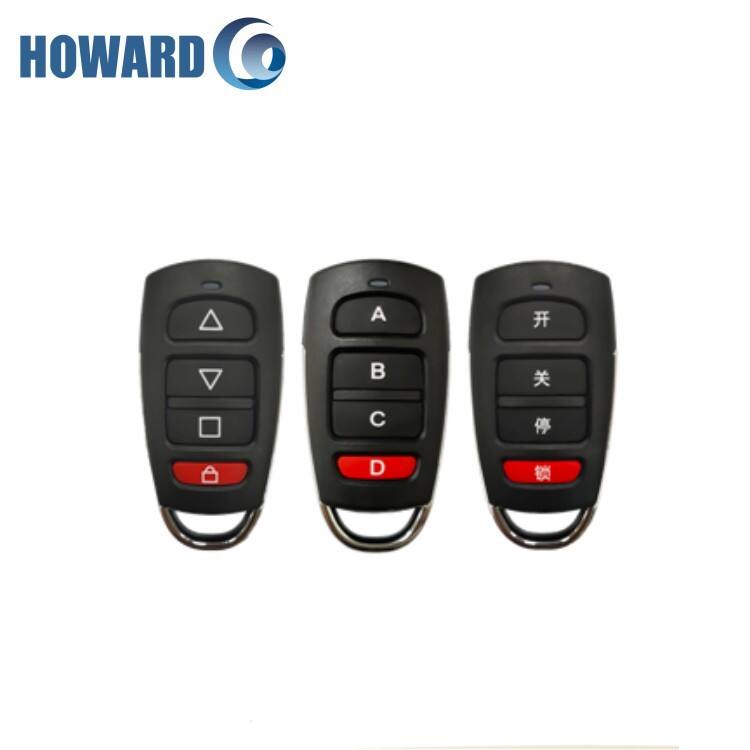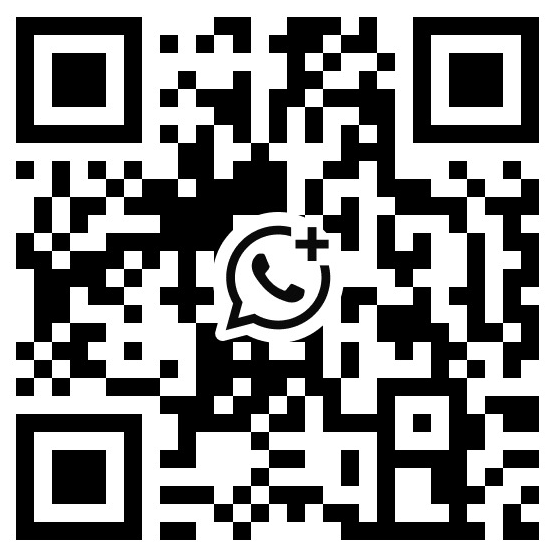How High-Frequency RFID Emitter Technology Works
What Are High-Frequency (HF) RFID Systems?
HF RFID systems work at around 13.56 MHz frequency and rely on electromagnetic coupling to send information back and forth between tags and readers. They perform really well in situations where devices need to communicate from a moderate distance, roughly up to 1.5 meters away. That's why many organizations choose them for things like secure access control and ID verification since they tend to read reliably even when there's some background noise or interference. Compared to lower frequency options, these HF systems can actually move data much quicker, reaching speeds of about 424 kbit/s. Plus, they follow the ISO 14443 standard which makes them compatible with most contactless smart card systems we see today in places like public transport and retail payments.
The Role of 13.56 MHz in Contactless Identity Verification
13.56 MHz has become pretty much the go-to frequency worldwide for secure access control systems. What makes this frequency special? Well, it supports those mutual authentication processes where both the card and reader verify each other before sharing any sensitive information. This means only properly authorized devices can communicate with encrypted data. The way this frequency works also handles interference from metal objects pretty well, which is why we see it so often in security badges that get embedded in employee ID cards and also in smartphones with NFC capabilities. Looking at industry research, most systems operating on this frequency manage around 99.6% successful first reads when tested under lab conditions. Not bad at all considering how critical these systems are for building security.
How HF Emitters Enable Digital Access Control Systems
HF emitters power modern access control by transmitting encrypted identifiers to readers through inductive coupling. For example:
- A badge's embedded emitter chip activates when entering a reader's 1.2-meter field
- The emitter sends a 128-bit encrypted credential linked to user permissions
- Readers verify credentials against centralized databases in <50 ms
This process underpins touchless entry systems in corporate offices and healthcare facilities, reducing physical contact points by 83% compared to traditional keys (Security Tech Report 2023).
Comparison of HF vs. Low-Frequency RFID in Security Applications
| Factor | HF RFID (13.56 MHz) | LF RFID (125 kHz) |
|---|---|---|
| Read Range | Up to 1.5m | <0.3m |
| Data Transfer Speed | 106–424 kbit/s | <12 kbit/s |
| Security Protocols | AES-128, MIFARE DESFire | Basic parity checks |
| Interference Resistance | Moderate (works near metals) | High (excels near liquids) |
As shown in industry-standard RFID specifications, HF systems provide superior security for access control while LF remains confined to short-range applications like animal tracking.
Security Advantages of 13.56 MHz HF Emitters in Access Control
Encryption and Mutual Authentication in High-Frequency Readers
HF RFID tags working around the 13.56 MHz frequency use AES-128 encryption along with mutual authentication processes where both the reader device and the credential need to confirm they're legitimate before any information gets shared between them. This two step verification process basically stops those pesky ghost transactions from happening and makes sure only proper equipment can talk to each other. According to some research published last year in the field of access control, facilities implementing these kinds of security measures saw about an 83 percent drop in unauthorized access tries when compared against older low frequency systems that don't have such robust protections built in.
Mitigating Cloning Risks with HF RFID Emitters
The encrypted data packets transmitted by HF emitters refresh dynamically, making cloned credentials functionally useless. Unlike static low-frequency RFID cards vulnerable to $25 handheld skimmers, HF systems generate session-specific cryptographic keys. Manufacturers further embed anti-tamper mechanisms that permanently disable emitters if reverse-engineering attempts are detected.
Security Standards and Compliance Requirements for HF Systems
Regulatory frameworks like ISO 14443-4 and IEC 60364-7-710 mandate HF-grade encryption for healthcare facilities, financial institutions, and government buildings. These standards require 256-bit minimum encryption strength for access logs and real-time intrusion alerts, which low-frequency 125 kHz systems cannot reliably support.
Why Some Organizations Still Use Less Secure Low-Frequency Systems
Despite known vulnerabilities, 32% of surveyed enterprises retain 125 kHz access control (Ponemon 2023) due to legacy infrastructure costs. Migrating campus-wide systems averages $4.20 per credential, creating budgetary barriers. However, hybrid readers supporting both frequencies are bridging this gap, allowing phased upgrades without full system replacement.
Performance Characteristics of HF RFID Emitters
High-frequency (HF) RFID emitter systems balance technical capabilities with security requirements in access control deployments. Understanding their operational parameters helps organizations optimize touchless entry systems while maintaining robust protection.
Typical Read Range of HF RFID Systems in Real-World Deployments
HF RFID emitters operating at 13.56 MHz typically achieve read ranges between 10 cm to 1.5 meters, with most commercial systems optimized for 0.3–1 meter interactions (ScienceDirect 2022). Environmental factors significantly impact performance:
| Frequency Band | Avg. Read Range | Metal Interference Sensitivity | Common Use Cases |
|---|---|---|---|
| LF (125 kHz) | 5-10 cm | Low | Keycard entry, animal tracking |
| HF (13.56 MHz) | 0.3-1 m | Moderate | Secure access, contactless payments |
| UHF (900 MHz) | 3-15 m | High | Inventory management, logistics |
Data from industry frequency comparisons shows HF systems provide optimal balance for door access scenarios where controlled proximity enhances security without sacrificing user convenience.
Balancing Read Range and Security in Touchless Entry Systems
The constrained read range of HF emitters intentionally limits vulnerability to remote skimming attacks. A 2023 security audit found HF-based systems experience 72% fewer unauthorized access attempts than long-range UHF alternatives in corporate environments. This design forces physical proximity for authentication, creating a natural barrier against drive-by credential theft.
Data Transfer Rates and System Responsiveness
HF RFID emitters support data transfer speeds up to 424 kbit/s (NFC Forum Standard), enabling rapid credential verification in <200 ms for typical access control scenarios. This responsiveness meets the demands of high-traffic entry points while maintaining AES-128 encryption protocols without noticeable user delays.
Integration of HF Emitters with NFC and BLE Technologies
Near Field Communication (NFC) as an Extension of HF RFID
The heart of NFC tech lies in high frequency (HF) emitters operating at that familiar 13.56 MHz mark shared by today's RFID systems. What sets NFC apart from regular HF tech is this two-way communication feature that lets devices talk back and forth securely when they're just a few centimeters apart. The close contact needed actually makes it harder for anyone to snoop on transactions, plus it opens the door to cool stuff like mutual authentication checks and encrypted security codes. Looking ahead, market analysts came out with numbers last year predicting NFC will hit around $30 billion globally by 2026. Why? Because people want their payments fast and frictionless, and businesses need reliable ways to pair devices for things like office access control systems without all the hassle of traditional methods.
Bluetooth Low Energy (BLE) Hybrid Models for Modern Access
When HF emitters are combined with BLE technology in hybrid systems, they can reach distances between about 10 to 50 meters while still keeping those important security protocols intact. The problem comes when looking at power usage though. BLE tends to eat up more battery life than passive NFC does, which is why many companies have started going modular with their designs instead. Getting pre-certified BLE modules actually cuts down on development expenses quite a bit, maybe around ten thousand dollars saved per device, plus makes it much easier to work with current mobile credential systems already in place. What these mixed setups really offer is something called adaptive authentication. Basically, HF handles the close range checks for who's nearby, while BLE keeps tabs on whether someone remains present continuously throughout whatever process needs securing.
Case Study: Multi-Technology Badges in Enterprise Security
One major Fortune 500 corporation saw a dramatic drop in unauthorized access cases - down by 63% overall - once they started using badges that combined HF, NFC, and BLE tech. Workers simply tap their badges on HF/NFC readers to get through doors, but what makes these badges really effective is the BLE component that tracks exactly where people are moving around inside secure zones. The multi-tech setup helps catch problems that old single frequency systems miss entirely. For instance, it spots when someone tries to share their badge with a colleague or when multiple people slip through a door together without proper authorization. After rolling out this new system, internal security checks found that response times to actual breaches improved by nearly half (about 41%) compared to those outdated LF-RFID systems most companies still rely on.
Real-World Applications of High-Frequency Emitters in Secure Access
HF RFID in Corporate Facilities and Hospitality Environments
The 13.56 MHz high frequency RFID emitters are now pretty much standard equipment in most corporate offices and upscale hotels these days. Companies have started issuing those smart badges powered by HF tech so employees can authenticate themselves easily. The 1 meter read range means workers don't need to swipe cards physically when entering secure areas. For hotels, these HF enabled keycards make life easier for guests too. They work smoothly with hotel management systems which allows staff to offer more personalized services. Looking at industry reports from last year, we see something interesting happening. Hotels that switched to HF systems reported cutting down front desk traffic by around 41% in 2023 thanks to those mobile compatible touchless check ins that guests love so much.
Contactless Identity Verification in Healthcare and Government
Many hospitals and clinics have started relying on HF emitters because they manage to strike just the right balance between keeping things secure and maintaining proper hygiene standards. When nurses swipe their badges with embedded credentials, these devices control access to areas where medications are stored and automatically record who enters when - something absolutely necessary for meeting those strict HIPAA regulations. On the government side of things, organizations are rolling out 13.56 MHz technology for verifying documents. Take the U.S. Federal Identity Program as an example. After switching to HF-based e-passports back in 2022, they saw security checks speed up by around two thirds according to their reports. That kind of efficiency makes a big difference in operations day after day.
Post-Pandemic Trends: The Rise of Fully Touchless Entry Systems
Touchless access solutions have seen an impressive 89% growth in demand since 2020 according to the Security Industry Association report from last year, which explains why HF emitters are becoming so popular at public places. At stadiums these days, event organizers mix HF RFID technology with NFC readers on phones to check tickets without anyone having to touch anything. Some progressive office buildings are even going further by installing systems that blend HF and BLE (Bluetooth Low Energy) tech to verify people's phones well before they get near any doors. Companies that switch to HF emitters report about half as many problems with stolen credentials as those still relying on older low frequency systems, making security much better overall.
FAQ Section
What is the typical read range for HF RFID systems?
The typical read range for HF RFID systems operating at 13.56 MHz is between 10 cm to 1.5 meters, although most commercial systems are optimized for interactions within 0.3 to 1 meter.
Why is 13.56 MHz a preferred frequency for RFID systems?
13.56 MHz supports mutual authentication processes, making it suitable for secure access control systems. It works well near metal objects, reducing interference and ensuring reliable communication.
How do HF RFID systems prevent unauthorized access?
HF RFID systems use AES-128 encryption and mutual authentication, where both the reader and the credential must verify each other's legitimacy before any information exchange. This prevents unauthorized access and ghost transactions.
Why do some organizations still use low-frequency RFID systems?
Despite the vulnerabilities of low-frequency systems, some organizations retain them due to legacy infrastructure costs, which make it expensive to migrate to HF systems. Hybrid readers can support phased upgrades without full replacement.




